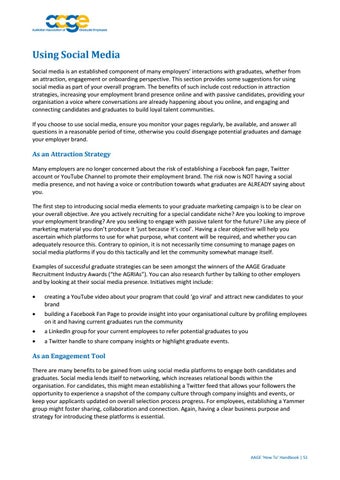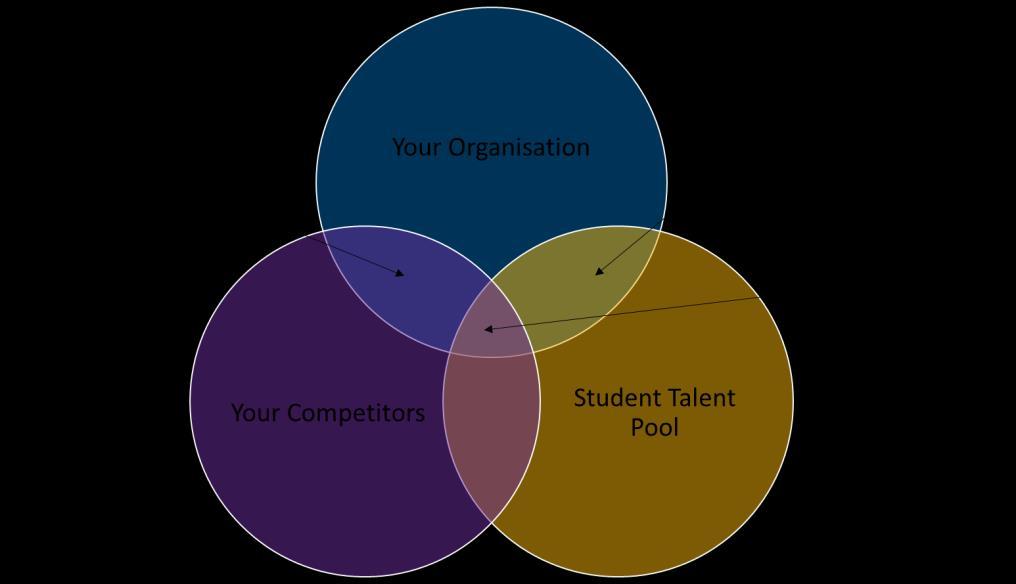Using Social Media Social media is an established component of many employers’ interactions with graduates, whether from an attraction, engagement or onboarding perspective. This section provides some suggestions for using social media as part of your overall program. The benefits of such include cost reduction in attraction strategies, increasing your employment brand presence online and with passive candidates, providing your organisation a voice where conversations are already happening about you online, and engaging and connecting candidates and graduates to build loyal talent communities. If you choose to use social media, ensure you monitor your pages regularly, be available, and answer all questions in a reasonable period of time, otherwise you could disengage potential graduates and damage your employer brand.
As an Attraction Strategy Many employers are no longer concerned about the risk of establishing a Facebook fan page, Twitter account or YouTube Channel to promote their employment brand. The risk now is NOT having a social media presence, and not having a voice or contribution towards what graduates are ALREADY saying about you. The first step to introducing social media elements to your graduate marketing campaign is to be clear on your overall objective. Are you actively recruiting for a special candidate niche? Are you looking to improve your employment branding? Are you seeking to engage with passive talent for the future? Like any piece of marketing material you don’t produce it ‘just because it’s cool’. Having a clear objective will help you ascertain which platforms to use for what purpose, what content will be required, and whether you can adequately resource this. Contrary to opinion, it is not necessarily time consuming to manage pages on social media platforms if you do this tactically and let the community somewhat manage itself. Examples of successful graduate strategies can be seen amongst the winners of the AAGE Graduate Recruitment Industry Awards (“the AGRIAs”). You can also research further by talking to other employers and by looking at their social media presence. Initiatives might include: •
creating a YouTube video about your program that could ‘go viral’ and attract new candidates to your brand
•
building a Facebook Fan Page to provide insight into your organisational culture by profiling employees on it and having current graduates run the community
•
a LinkedIn group for your current employees to refer potential graduates to you
•
a Twitter handle to share company insights or highlight graduate events.
As an Engagement Tool There are many benefits to be gained from using social media platforms to engage both candidates and graduates. Social media lends itself to networking, which increases relational bonds within the organisation. For candidates, this might mean establishing a Twitter feed that allows your followers the opportunity to experience a snapshot of the company culture through company insights and events, or keep your applicants updated on overall selection process progress. For employees, establishing a Yammer group might foster sharing, collaboration and connection. Again, having a clear business purpose and strategy for introducing these platforms is essential.
AAGE ‘How To’ Handbook | 51


